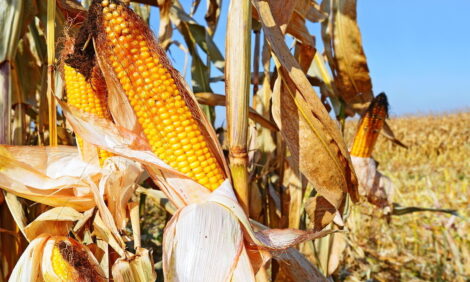



Fertilising in Late Autumn
Fertilising pasture in the late autumn can strengthen grass for the following spring, says Rory Lewandowski, Ohio State University Extension Educator, Agriculture and Natural Resources.Late fall can be a good time to apply fertiliser and lime to pastures. Make sure that weather conditions are right, mainly that soil is not getting compacted or ruts created during the application of lime or fertiliser. Pasture fertility is complicated by the fact that grazing livestock move and transfer nutrients. This will result in pockets of higher or lower fertility compared to average pasture values. For this reason, applications of fertiliser and lime to pastures should be based on good soil sampling procedures.
Mr Lewandowski recommends grid soil sampling to identify low, average and high fertility areas within a pasture. He says this will allow fertiliser and lime application to be targeted to where it is most needed and avoid over and under application when a recommendation is based on one single average sample. This procedure might be mimicked by the observant pasture manager sampling according to pasture productivity and livestock grazing patterns.
Once soil test results are in hand, a pasture fertility goal might be to apply limestone and fertiliser to meet minimum or critical soil test levels. For grass/legume pastures, Mr Lewandowski recommends the following soil test goals: soil pH of 6.5, soil phosphorus level of 25 parts per million (ppm) and soil potassium level of 100 to 110 ppm. Once these critical values have been reached, the goal might be to maintain or increase pasture fertility through good grazing management.
If a choice must be made between fertiliser and limestone, putting dollars into increasing the soil pH is probably the wisest use of dollars, says Mr Lewandowki. Getting soil pH to 6.5 or close to it allows the availability of other nutrients in the soil to be maximised. Various sources recommend that urea nitrogen fertiliser should not be applied for up to one year after lime has been surfaced applied.
When the question of nitrogen fertiliser is raised, we must think about the nitrogen source, weather forecast, and soil temperature. If the goal of the producer in applying nitrogen fertiliser is to produce grass growth for livestock grazing, then the benefit from a late fall application (November) is very limited. Our cool season grasses grow best in an air temperature range of 55 to 75 degrees F. Mr Lewandowski asks, how many of these days can we count on in November? There can be some slower grass growth, particularly with tall fescue, even in the 40 to 45 degree range, but even so, the amount of dry matter accumulation will not be very great.
The main benefit of applying a nitrogen fertiliser in November is to strengthen that grass plant for the coming year. Even though the air temperature is too cold for above ground growth, the soil temperature is warm enough for root growth. Late fall nitrogen fertilisation feeds the plant roots, allowing the plant to build a stronger root and tiller system. Grasses fertilised in the late fall will green up quicker in the spring and produce more vigorous growth.
If the goal is to provide nitrogen for root growth, as well as build up phosphorus and potassium soil levels, a fertiliser material like 9-23-30 or 19-19-19 can be used. If primarily nitrogen and phosphorus are to be supplied, consider using DAP, 18-46-0. When nitrogen is the focus, urea is the cheapest nitrogen source, supplying about 44 to 46 per cent actual nitrogen. However, urea can lose a portion of its nitrogen to the atmosphere through volatilisation. The process by which this happens involves urease enzymes contained in the soil and plant residues that convert the urea component to free ammonia gas.
Factors that influence the rate of the urease reaction are soil temperature, soil pH, moisture/humidity, and residue coverage of the soil surface. Generally if urea can be applied within 24 hours of a half-inch or more rainfall, loss by volatilisation is not a factor. Using a sulphur-coated urea can slow the release of urea down and reduce losses. Adding a material, like Agrotain, which is a urease inhibitor, can buy about another 14 days before a rainfall is needed to avoid losses.
Getting back to our late fall fertilisation discussion; urea works well in this situation because generally our air and soil temperatures are low enough that large volatilisation losses are not a concern. Research from North Dakota on urea volatilisation losses related to soil temperature show that at a soil temperature of 45 degrees the percent of urea nitrogen that was volatilised after 10 days was 6 per cent. Even so, the best urea application strategy is to time the application before rainfall.
To benefit grass plant root and tiller growth in the coming growing season, consider an application of 30 to 50 pounds of actual nitrogen per acre to pastures in November.


